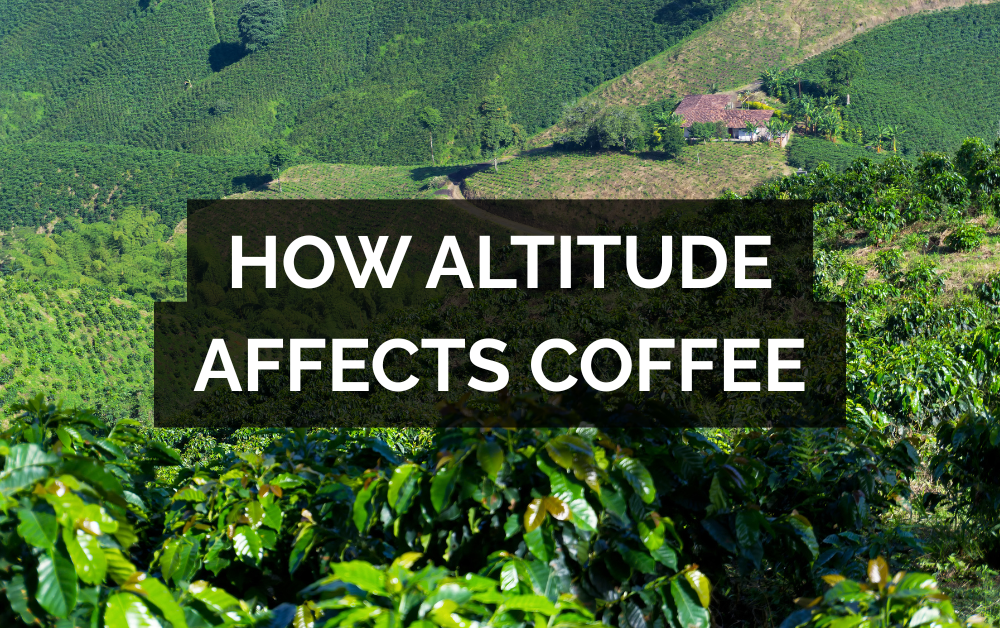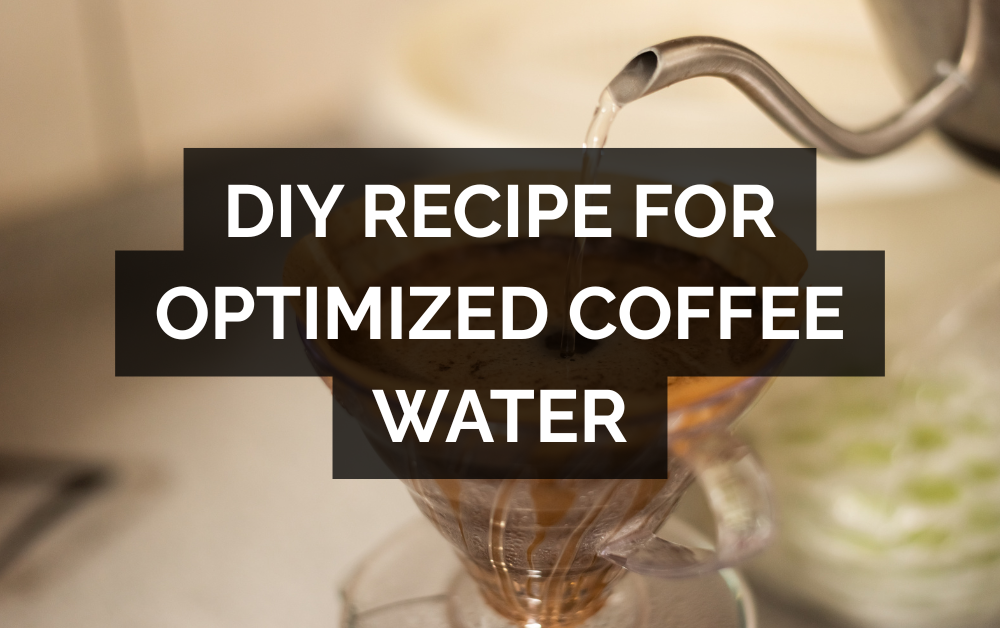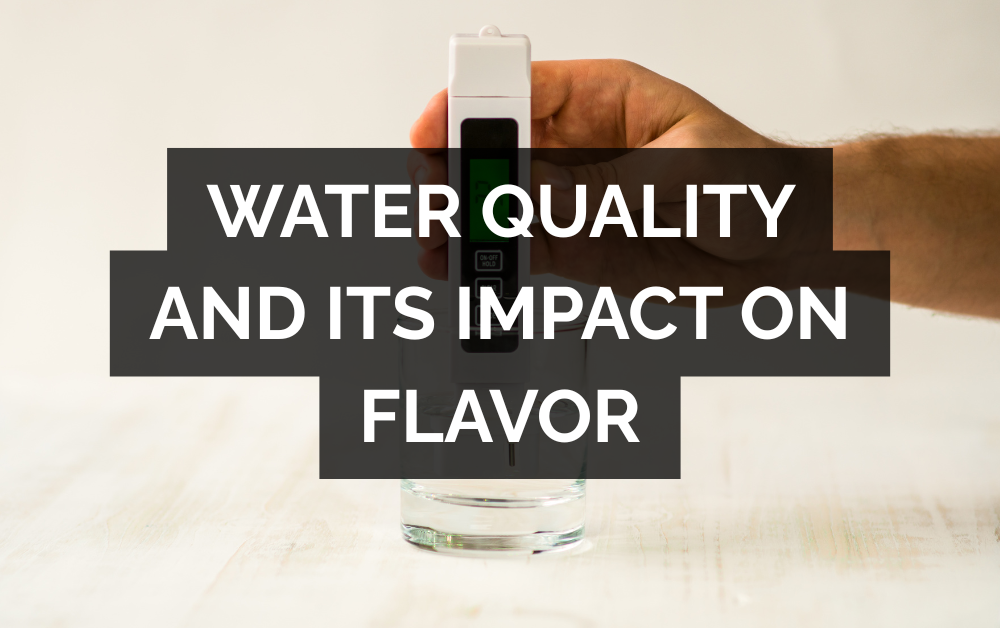If you’re serious about coffee, you’ve probably seen elevation listed on coffee bags—1,200 MASL, 1,800 MASL, maybe even 2,100. But what does that really mean for the coffee in your cup?
Elevation isn’t just a farming detail—it’s one of the most powerful factors shaping a coffee’s flavor, complexity, and overall quality. Once you understand how altitude works its magic (and what to look for), you’ll be better equipped to choose coffees that match your taste and expand your palate in meaningful ways.
Let’s break it down.
The Basics: What Elevation Does to Coffee Plants
Elevation influences everything from temperature and rainfall to sunlight exposure and soil composition. But the key driver for flavor comes down to temperature.
At higher altitudes, temperatures drop. Cooler air means coffee cherries take longer to mature. That slower development time gives sugars more time to build, acidity more time to develop, and overall complexity more time to form.
In simple terms:
-
Higher elevation = slower cherry growth = more flavor development.
This is why high-elevation coffees often come with descriptors like floral, citrusy, tea-like, or complex. Lower-elevation coffees, by contrast, often taste earthier, chocolatier, or milder, sometimes with less pronounced acidity.
Elevation and Coffee Flavor: A Guide
Let’s look at what different elevation ranges tend to produce:
| Elevation (MASL) | Typical Flavor Characteristics |
|---|---|
| < 1,000 MASL | Simple, earthy, nutty, chocolate-heavy, less acidity |
| 1,000–1,200 MASL | Balanced, mild, smooth with moderate sweetness |
| 1,200–1,500 MASL | Sweet, round-bodied, gentle acidity, hints of fruit |
| 1,500–1,800 MASL | Bright, fruity, floral, more complex and dynamic |
| 1,800+ MASL | Intense acidity, delicate florals, crisp fruits, tea-like |
MASL stands for Meters Above Sea Level, and yes—it matters. These aren’t hard rules, but they’re solid benchmarks for flavor expectations. A washed Ethiopian coffee grown at 2,000 MASL won’t taste like a lowland Brazilian at 900 MASL. And that’s a good thing.
Why Higher Isn’t Always “Better”
A common trap is assuming that higher elevation always means higher quality. Not so fast.
Yes, high-grown coffees tend to be more flavorful and complex, but not everyone likes high acidity or floral notes. Some coffee lovers want a heavier body, more chocolate, or a comforting smoothness. Those qualities often shine in lower-elevation or mid-elevation coffees.
Also, not all high-elevation coffees are grown or processed well. Elevation is one variable—processing method, varietal, and farm practices matter too. A 1,700 MASL coffee processed poorly won’t outperform a clean, carefully produced 1,300 MASL coffee.
Practical Tips for Buying Based on Elevation
So how do you use this information when buying coffee? Here are five tangible tips:
1. Know Your Flavor Preferences
If you like:
-
Bright, citrusy, and floral coffees → aim for 1,700+ MASL, especially from Ethiopia, Kenya, or Colombia.
-
Balanced and sweet with moderate acidity → go for 1,200–1,500 MASL from countries like Guatemala, Peru, or Honduras.
-
Chocolatey, nutty, low-acid brews → look for coffees under 1,200 MASL, especially from Brazil, Sumatra, or India.
2. Match Elevation with Processing
-
High elevations + washed process = crisp, clean, and high clarity.
-
Mid-to-high elevations + natural or honey process = fruity, jammy, or winey notes.
-
Lower elevations + natural or wet-hulled = earthy, funky, or syrupy.
Processing can either enhance or soften the traits that come from altitude, so check both when possible.
3. Understand Regional Elevation Norms
Some countries naturally grow coffee at high altitudes. For example:
-
Ethiopia: Coffees often come from 1,800–2,200 MASL.
-
Kenya: Commonly 1,600–2,100 MASL.
-
Colombia: Ranges from 1,200–2,100 MASL.
Others, like Brazil, produce much of their coffee below 1,200 MASL, with more emphasis on body and sweetness than bright acidity.
This context helps you set expectations and explore new origins confidently.
4. Use Elevation to Experiment
Use elevation as a variable in your own tastings. Buy two coffees from the same region but at different altitudes. Keep everything else constant (roast level, brew method), and taste them side by side. You’ll start to train your palate to identify how elevation affects taste.
Try a cupping with:
-
A Colombian at 1,300 MASL
-
A Colombian at 1,900 MASL
It’s a powerful, hands-on way to learn how altitude expresses itself.
5. Don’t Obsess—Taste Rules All
At the end of the day, drink what you love. If a 1,000 MASL Brazilian gives you joy every morning, that’s what matters. Elevation is a guide, not a gospel. Use it to explore, not to gatekeep.
Bonus: Elevation and Bean Density
Here’s something many enthusiasts overlook: Higher-elevation coffees are denser. That density comes from slower cherry development, resulting in beans that are more compact, with more tightly packed cellular structure.
Why does that matter?
-
Roasting: Denser beans need more energy to develop properly. Roasters often adjust profiles based on bean density, so knowing elevation can hint at the roast approach.
-
Grinding: High-elevation beans are harder and may grind more consistently, affecting extraction and flavor clarity.
So if you’re home roasting or dialing in espresso, bean density (and therefore elevation) matters more than you think.
Final Thought: Elevation as a Flavor Compass
Elevation is more than a number—it’s a flavor compass. It helps you predict what’s in the cup before you brew. It lets you connect geography to taste. And most importantly, it empowers you to make smarter, more satisfying coffee choices.
If you're new to using elevation as a guide, start simple. Choose one region you love—like Ethiopia or Guatemala—and explore coffees across its elevation range. Note the differences, find your sweet spot, and build from there.
The more you understand about how altitude shapes coffee, the more precise—and adventurous—you can become in your coffee journey.
TL;DR:
-
Higher elevation = slower cherry growth = more complex, acidic, fruity flavors.
-
Lower elevation = simpler, rounder, chocolatey coffees with lower acidity.
-
Match elevation to your taste, not a quality ranking.
-
Use elevation as a learning tool to train your palate.



